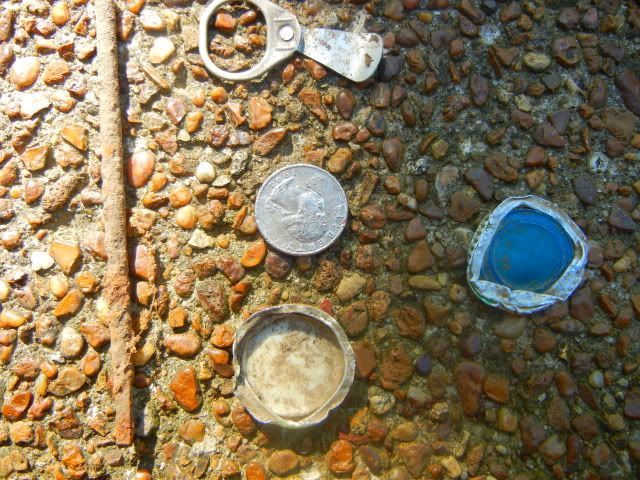Through the years and decades that detectors have been around we have seen an assortment of detector 'tests' or 'comparisons' done using one nail, an assortment of nails, nails spaced ina row, and nails 'X' stacked on top of a coin. And through these many, many years we have seen
more and more detectors struggle to give a 'beep' on a coin in an iron nail masking situation. Why? Technology progression and all the super-duper detector 'advancement' is one reason, and we can add increased 'digital' processing to the mix, too.
If we roll the clock back roughly 40+ years we had Compass Electronics enter the detector business and as I recall, testing detectors in and amongst iron nails seemed to start to show up more about that time. By about 1970 we saw a real surge in T/R (Transmit/Receive aka I/B or Induction/Balance) detectors beating out the BFO designs. A good old T/R detector, prior to any Discrimination circuitry, would usually do well in and around iron nails. A few might give a slight response to iron nails, many would slightly null on them, but for the most part, the good old T?R design simply 'ignored' iron nails. At the time, Compass detectors seems to excel on providing a great response to a coil in an iron nail mix.
Once we got T/T-Discriminators they seemed to work fairly well, if they adjusted low enough, but some had a little more rejection at the minimum setting and might work, just not work well enough. Then just about the mid-70's we had the first VLF (Very Low Frequency or Ground Cancelling circuitry) detectors hit the market. The beauty was that they adjust to ignore or cancel or balance the ground mineral signal. The results were that these models ignored the ground mineral but responded to ALL targets, ferrous and non-ferrous, and today we usually just call them an All Metal search mode.
If you are in All Metal accept, then you'll get a positive 'beep' to all ferrous and non-ferrous targets. Shortly after we had 'dual mode' models with a Threshold-based All Metal mode and a traditional T/R-Disc. mode. Hunt to find anything (All Metal) and switch to 'traditional' or 'conventional' T/R Discrimination to check for a rejected or accepted target. Some of the T/R-Disc. modes didn't adjust very low so as to just ignore iron nails like the straight T/R's did, and with a higher minimum Disc. setting some had difficulty with iron nails, and some other typical challenging iron trash ... such as crown-type bottle caps and small pieces of rusty tin.
Well, times change and as we progress things aren't necessarily better. Different, improved in some ways, but not always as good in other respects. When we got the VLF-Disc. (motion-based Discrimination), like we use today on virtually every make and model, other things came into play, such as difficulty rejecting some problems trash (especially those blasted bottle caps), and even iron nails. So, with those cautions to consider, here is how I reviewed or interpreted your post.:
jerry123 said:
Placed nail and quarter side by side and ran my 3 detectors in several directions.
For comparison sake, all of us here in the USA know the size and shape and consistency of the US 25





